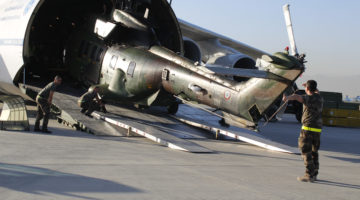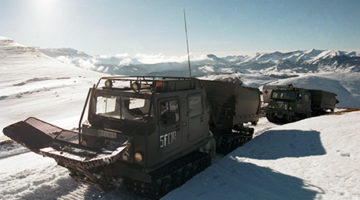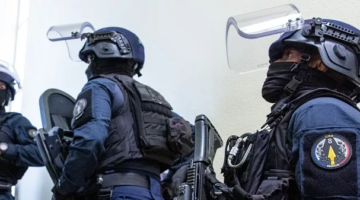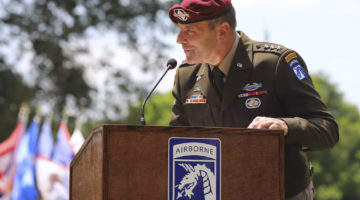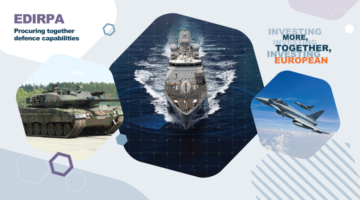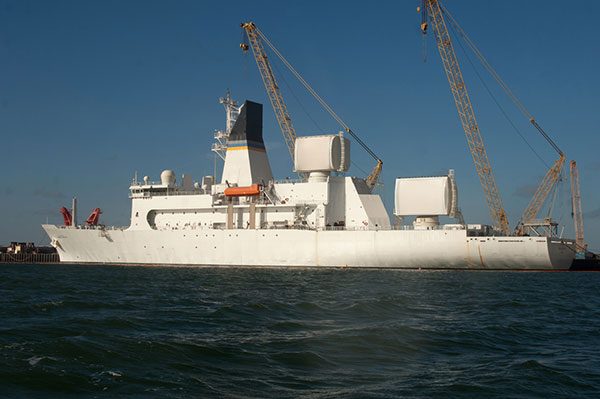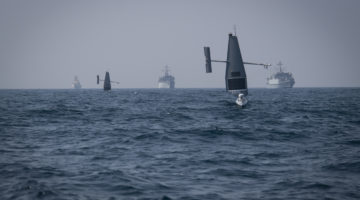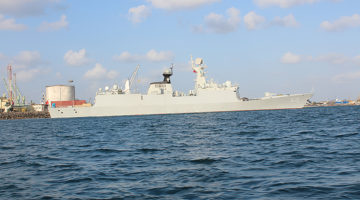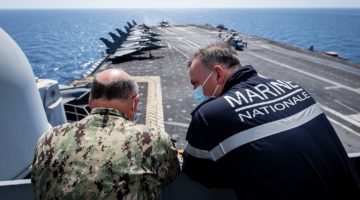Photo credit © US Navy
The Military Sealift Command is not the most visible element of the USN-USMC team, unless you are at sea and need their support. Whether support directly from the ships or from the air assets they fly to provide for vertical replenishment, the more than 100 MSC ships are the lifeblood of the fleet.
And in an era of tight budgets and challenges to fleet size, the ships of MSC are part of the solution to provide for enhanced fleet performance. Indeed, the recent landing of a V-22 Osprey on a T-AKE MSC ship was an eye opener of how the roles of these ships can change, as the air assets change. The intersection between the air and surface assets was highlighted once again with regard to the dynamics of change.
According to the former head of the Military Sealift Command, Admiral Buzby :
MSC has seen its mission sets expand over time, to today when we have 20 missions. The demand signal is growing; the resources are not. And we operate a very diverse fleet, of varying ages and unique requirements. This places significant challenges for sustainability as well as training crews for specialized ships.
We operate 58-year-old steam plants all the way up to gas turbine water jet, 38-knot ships, and everything in between. We operate diesel- electric, geared-diesel, gas turbine, you name it, if it is out there, we operate it. It is a very diverse fleet.
MSC and its predecessor Military Sea Transportation Service came about in 1949 when four different shipping agencies, if you will, were put together post-war. All of those were put together to form military sea transportation service, which in those days was troop ships, and point-to-point tankers. They weren’t servicing the fleet; they were hauling from point A to point B.
And then, in 1972, when the first fleet replenishment oiler was given to MSC – USS TALUGA (AO 62), the Navy decided to experiment with the MSC, in effect. The great experiment was to see if civilian mariners could pump fuel across 120 feet of water without spilling any or bumping into the ship there alongside. And sure enough, not only could they do it; they were doing it more efficiently and for a fraction of the cost.
From those humble beginnings, other ships were added. Oilers were joined over time by cable layers, range tracking ships, tugs, ammo ships, fast combat store ships, ocean surveillance ships, hospital ships, prepositioning ships, survey ships, and the list has now gone to 20 missions. That’s 20 missions for the Navy that used to be operated by Blue Jackets.
And we’re getting additional missions all the time.
The ships are run by civilian mariners who are civil servants in the US government, and not members of the US Navy.
The latest MSC ship, the USNS Howard O. Lorenzen (T-AGM-25), is a 534-feet-long Missile Range Instrumentation Ship, and can be seen in the video linked below as it departs Oregon via the Columbia River.
The Oregon Military Department released photos Monday of a 534-foot U.S. Navy ship that sailed down the Columbia River out to the Pacific Ocean on its way to monitor missile launches and weapons tests conducted around the world.
The USNS Howard O. Lorenzen is one of three missile-range instrumentation ships operated by the Navy’s Military Sealift Command and works in the Pacific. It does missions sponsored by the U.S. Air Force.
The USNS Howard O. Lorenzen (T-AGM-25) is the latest vessel of the Military Sealift Command’s (MSC) three-missile-range instrumentation ships. The new ship is expected to achieve initial operational capability in 2014. The other two missile range instrumentation ships are the USNS Invincible and the USNS Observation Island…..
The T-AGM-25 is a commercially designed and built ship. It has a length of 534ft, beam of 89ft and draft of 22ft. The displacement of the ship is 12,229t. The vessel will have 88 staff, including sailors, civil service mariners and mission technicians from government agencies.
The ship will be used for tracking and monitoring all missile launches and weapon tests carried out around the world. It will also be used in data collection of the tested weapons and launched missiles, providing useful information to the designers of arms in the US.
It will be one of the 24 ships operated by MSC under its Special Mission Program. Under this program, ships are manned and operated on a contract basis by civilian mariners under the jurisdiction of MSC.


